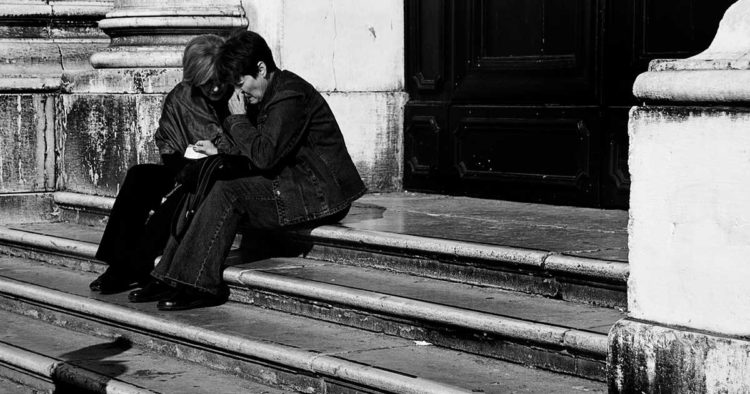
Conscience: The Origins of Moral Intuition by Patricia S. Churchland; Norton, 226 pp., $27.95
The War For Kindness: Building Empathy in a Fractured World by Jamil Zaki; Crown, 261 pp., $27
These two new books give lucid, stimulating accounts of recent discoveries in neuroscience and psychology. Both authors aim to challenge antiquated views of the brain and human behavior. In so doing, they help us think through perennial debates about the sources of morality and the degree to which we inherit or can enhance traits like empathy. Both are careful to evaluate the cogency of the research they cite, noting when it remains inconclusive or unpersuasive. Jamil Zaki, a professor of psychology at Stanford, who also directs its Social Neuroscience Laboratory, usefully includes an appendix summarizing the evidence for the findings he cites and giving them a 1 to 5 rating, from weaker to stronger. Oddly, however, neither book mentions, much less rates, possible moral problems with some of the research, whether by neuroscientists injecting substances into the brains of rats or monkeys or by social scientists subjecting students to deceptive scenarios.
Early on, Churchland, professor emerita of philosophy at the University of California–San Diego, sets forth a working formulation of conscience as “an individual’s judgment about what is morally right or wrong, typically, but not always, reflecting some standard of a group to which the individual feels attached.” Later, she states that conscience “is a brain construct rooted in our neural circuitry, not a theological entity thoughtfully parked in us by a divine being.” The intervening chapters show in fascinating detail the path leading from the first to the second formulation. They explain the role of the cortex for mammals, culminating in the unusually large one of humans, and argue that an attachment to mothers—and in some cases to fathers, kin, and friends—is fundamental to social behavior and in turn to moral behavior. Human moral responses are therefore rooted in the cortex, supported by more ancient structures, such as basal ganglia and neurochemicals such as dopamine, sex hormones, and the neurohormones of oxytocin and vasopressin. Studies show how these factors combine, specifying their different roles, as for oxytocin in strengthening social bonds. When it comes to psychopaths, however—people with no moral compass who lack feelings of guilt or remorse and exhibit no empathy toward people they have injured—it has, so far, proved harder to locate specific brain abnormalities. The same is true of persons exhibiting self-destructive moral behavior, known as scrupulosity.
The subtlety with which Churchland describes examples of sociality and caring in different species, including humans, and her willingness to explore the “beguiling diversity” of how these species exhibit parental attachments contrast with her sweeping rejection of large swaths of moral philosophy. After devoting 10 brief pages to deficiencies in utilitarian and Kantian views of morality, she concludes that they “look a bit thrashed at this point.” Yet why should she not consider the diversity and ingenuity of her fellow philosophers with the same interest that she devotes to nonhuman species? In particular, why not look more closely into their writings about conscience and its origins? Immanuel Kant, for example, specified that conscience, along with moral feeling and the love of one’s neighbor, are “natural predispositions” of the mind that are necessary for morality, though not sufficient for its exercise.
In The War for Kindness, Zaki issues a call for concerted action to build empathy in a world he sees as fractured and threatened by escalating tribalism, cruelty, and isolation. He compares “being a psychologist studying empathy today [to] being a climatologist studying the polar ice: each year we discover more about how valuable it is, just as it recedes all around us.” Like environmentalists who propose imaginative ways to reverse or at least arrest developments contributing to global warming, Zaki provides examples of efforts to restore or reinforce the capacity for empathy. He offers vivid stories in many settings, such as nurses’ and physicians’ work in intensive-care units, actors’ reenactments of crimes in a police academy, and photojournalists’ documentation of uprisings, funerals, and wars.
Recent research offers more hope for such efforts, Zaki insists, than when empathy was regarded as an unchangeable trait you were either born with or not. Defining empathy as an “umbrella term that describes multiple ways people respond to one another, including sharing, thinking about, and caring about others’ feelings,” he points to studies showing it to be more like a teachable skill than a hardwired trait. Training in empathy even turns out to bring growth in empathy-related parts of the brain.
Zaki’s larger assertions about the decreasing levels of empathy in the United States and worldwide may require further consideration. He cites a study of American college students showing that “the average person in 2009 was less empathetic than 75 percent of people in 1979”; and he notes the increasing proportions of people who live alone, in cities, and participate less in activities like church attendance and team sports while engaging more in solitary online pursuits. But more evidence would be needed to show that these people are also becoming less capable of empathy. And how might he respond to Steven Pinker’s view, in The Better Angels of Our Nature, of a historical shift in the opposite direction?
Readers, regardless of how they come out on this score, will find themselves engaged by Zaki’s moving accounts of individuals and groups learning to become more empathetic, even in the most challenging circumstances. He makes clear from the beginning how much he has learned about empathy in his personal life, much as Churchland speaks of feeling her conscience roiling or badgering her or otherwise making its voice heard. This personal approach opens up both books to needed dialogue about their daunting topics.